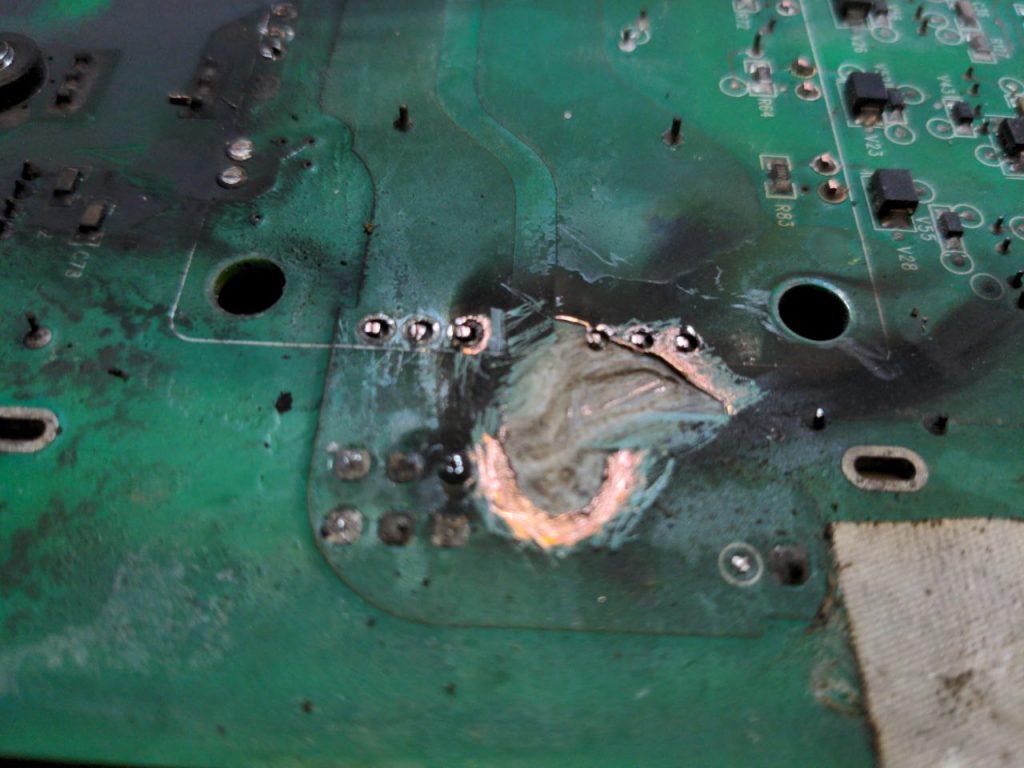Printed Circuit Boards: Troubleshooting
No matter the industry, printed circuit boards are the foundation of most vital machinery in a plant. These boards commonly use copper conductors to send electrical signals, allowing the device to operate. Over time, these parts get worn out and damaged. By learning how to troubleshoot PCBs, you can quickly detect issues and know when it’s time for a repair. Here are a few simple techniques to spot common problems:

1.View the components:
- Many issues can easily be detected by the naked eye. Look out for burnt or missing/dislodged components, overlapping traces, or indications of overheating. The image above depicts a clear example of what you may see.
2. Inspect the components physically:
- Lightly feel for warm areas. If you find a spot, try spraying it with canned air and re-test the part. Important: make sure to only touch the board with one hand to avoid a potentially dangerous electrical shock.
3. Test discrete components:
- The parts to test include: resistor, capacitor, diode, MOSFET & LEDS. Use a AVO/LCR meter to determine if any part is functioning at a higher value than the component itself. This is a sign that the part or the solder joint is bad.
4. Conduct IC Testing:
- Use a logic analyzer and & oscilloscope to test the ICs and look for irregular behavior.
Ultimately, printed circuit boards vary significantly in complexity and repair needs. ICS is qualified to troubleshoot and fix them all! We have a vast supply of replacement parts; we even design custom parts when necessary. If you’re noticing any of the issues described here, simply complete a repair form. ICS will get the machine up and running again in record time, and we will speed up the process even more if it’s an emergency.
